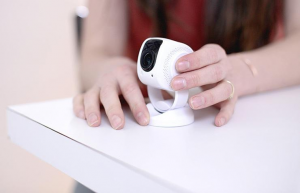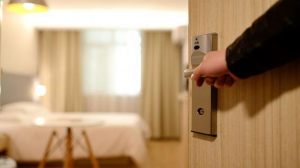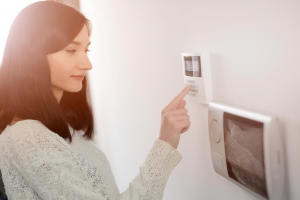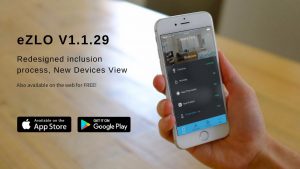How to Set Up a Smart Home Without Wi-Fi?
- March 31, 2022
- by Ezlo Admin
Smart Home Without Wi-Fi
Yes, Wi-Fi is not the only communication technology used in home automation…
Smart home without Wi-Fi I bet your first response to the title statement will be — “Why without Wi-Fi?” True, in 2017 most households installed Wi-Fi routers for easy and inexpensive Internet access. Our phones, tablets, TVs, and laptops are connected to Wi-Fi and it seems only logical to use more Wi-Fi-enabled devices in the existing network. This is why, when planning a smart home system, we first think of basing it on Wi-Fi as the technology connecting all sorts of home automation devices. It is already there, so why not use what we have and save some money?
OK, it makes sense, but do you remember what happens when there are too many devices connected to the same Wi-Fi router? That’s right, the network speed drops with each new device until neither one can open a single browser page. And home automation systems usually consist of several individual devices each serving its purpose and needing to communicate its statuses and settings. With many connected devices, the performance of your home Wi-Fi network will drop to unacceptable levels.
Another point to consider — connect your phone to a Wi-Fi network and start moving away from the router. Look at the network indicator — strong… weaker… weaker… gone. Each router can serve only so much space beyond which the signal is lost. If you are planning a smart home system including, for example, the garage and the outside fence, choose a powerful Wi-Fi router with a broad coverage range, because a usual router may be insufficient to serve a complete home automation system.
Before we go on — I do not mean to say that Wi-Fi is to be avoided! Not! I want to show that there are other communication technologies to consider while planning your home automation. So, let’s see what else there is to use in your smart home systems.
Bluetooth
Bluetooth technology made a quantum leap in 2017, improving its position as the technology for home automation systems. We are talking about Bluetooth Mesh — a protocol allowing many-to-many communication over Bluetooth Low Energy. This innovation removed the limitations of supported connections number and expanded the relatively narrow Bluetooth range. In Bluetooth Mesh, each connected device becomes a repeater relaying the signal further. Unlike Wi-Fi, with Bluetooth Mesh more devices do not mean poor performance — on the contrary, they increase the network coverage.

Most smart home hubs currently available on the market support Bluetooth communication — you can choose between Samsung Smartthings, Amazon Echo Dot, Wink Hub 2, and several others. And if we look into Bluetooth-enabled home automation devices, we will go on forever, as there are thousands of them out there. So, if you decide to set up your smart home system on Bluetooth technology, you will get a robust and reliable solution that will not interfere with your existing Wi-Fi network and will not drain power from your devices as fast as Wi-Fi does.
Z-Wave and Zigbee
Both are wireless communication protocols operating via a radio frequency. The hub serves as the central radio station connecting other devices. Despite the similarities in the operation of both protocols and the principles of smart home organization, Z-Wave is considerably more popular with individual homeowners while Zigbee is better accepted in commercial applications. The reason is simple — Zigbee devices produced by different manufacturers can be sometimes hard to integrate into a single system. In private households, home automation systems are rarely installed at once; in most cases, devices are added one by one, as necessary. So, in smart home systems, integration options are one of the most important factors. At the same time, enterprises usually plan the entire automation system at once and contract a single company to perform all installation works and provide all required components.

On the other hand, Z-Wave is much better suited for private smart home systems. You can find all sorts of Z-Wave hubs and devices on the market and combine them into a complete home automation network. Samsung Smartthings and Wink Hub 2, for example, support both Z-Wave and Zigbee, so you can use either of them as the “heart” of your smart home. As for Z-Wave automation devices — their name is legion. Yale locks, Honeywell thermostats, Jasco dimmers, and dozens of other products can be integrated to create a comprehensive system protecting and monitoring your house 24/7.
Now, back to the big question — can I set up a smart home without Wi-Fi? I’m afraid I will have to disappoint you here as the truth is… you can’t. With all the wonderful options of Bluetooth and Z-Wave, there is still one major bottleneck — the connection between the home automation system and your smartphone. The smart home hub has to communicate with your mobile application, and Z-Wave smartphones are still a matter of the future. Of course, you can connect the smart home hub with an Ethernet cable and use mobile Internet on your smartphone with other devices communicating via Z-Wave or Bluetooth, but the most optimal solution will be a combination of Wi-Fi and another protocol to create a home automation system making the most of the available devices and technologies.




